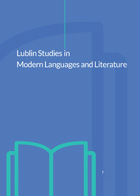Apperception in Compounding as Manifestation of Iconicity. Selected Remarks on Jan Michał Rozwadowski’s Theory of Apperception
Apperception in Compounding as Manifestation of Iconicity. Selected Remarks on Jan Michał Rozwadowski’s Theory of Apperception
Author(s): Konrad KlimkowskiSubject(s): Language and Literature Studies
Published by: Wydawnictwo Naukowe Uniwersytetu Marii Curie-Sklodowskiej
Keywords: compound formation; apperception; Rozwadowski
Summary/Abstract: This paper draws upon the cardinal assumption that most relations between compound components may be regarded as specific manifestations of iconicity. It manifests itself in compound formation as a phenomenon named “apperception” (apercepcja). The concept of apperception – proposed in Polish linguistics by Jan Rozwadowski, strongly influenced by Wundt – is a powerful tool in the description and functional explanation of word and sentence structure. In a nutshell, apperception may be defined as a cognitive process comprising two functional strategies speakers undertake during meaningful utterance construction: a) they establish similarity links between the already existent utterances (and their meanings); b) they establish distinction points between the already existent utterances and the new one. A proposal to view apperception as a manifestation of iconicity follows an observation that apperception helps discern how formal organization of compounds mirrors the cognitive (functional) strategies of encoding their meaning. The text also includes solutions which, are indispensable if Rozwadowski’s theory is to handle a wider spectrum of lexical data.
Journal: Lublin Studies in Modern Languages and Literature
- Issue Year: 32/2008
- Issue No: 1
- Page Range: 172-190
- Page Count: 19
- Language: English

